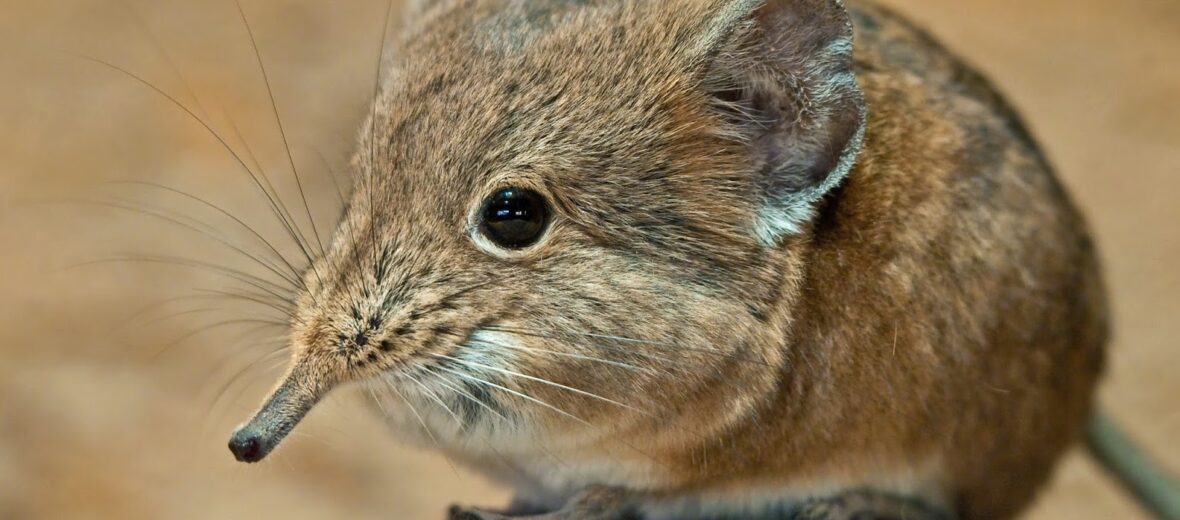
The elephant shrew, aka sengis or jumping shrew, is not actually a shrew at all. Recent research and categorization suggests that they are more closely related to elephants, aardvarks, & sea cows. Believe it or not. Don’t let their size fool you. They are quite well adapted to life in Africa. They are agile, quick, and careful as they have many predators.
First the Stats…
Scientific name: Rhynchocyon cirnei
Weight: Up to 1.5 lbs.
Length: Up to 12 in plus their up to 9 inch long tail
Lifespan: Up to 4 years
Now on to the Facts!
1.) Elephant shrews are mostly insectivores (eat insects).
2.) The elephant shrew is only found in Africa.
3.) Female elephant shrews undergo a menstrual cycle similar to that of human females, however gestation (pregnancy) is only 45 – 60 days long.
4.) Litters consist of 1 – 3 babies.
5.) They inhabit the dry steppes and stone deserts of southwestern Africa.
But wait, there’s more on the elephant shrew!
6.) These (non-shrews) are diurnal (awake during the day).
7.) The young are born relatively well developed, but remain in the nest for several days before venturing outside.
Did you know…?
The elephant shrew has the ability to jump up to 3 feet in the air, due to their long hind legs.
8.) After 5 days, the young’s milk diet is supplemented with mashed insects, which are collected and transported in the cheek pouches of the female.
9.) There are 19 known species of elephant shrew.
10.) Birds of prey, snakes, and lizards all prey on these cute critters.
Now a Short Elephant Shrew Video!
Also, check out the Critter Science YouTube channel. Videos added frequently!
Want to suggest a critter for me to write about? Let me know here.



